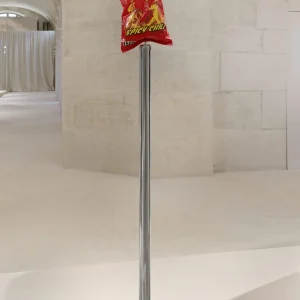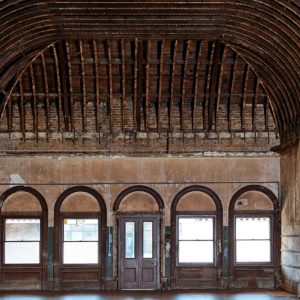What can art learn from nature? Beyond mere mimicry of form, what inspiration does nature offer for creation? Amid a tapestry of intertwined colors and shapes, London-based artist and curator Yanbing Liu’s work seems to transport viewers into another realm—a complex universe born from the simplest of rules. His Sense of Nature series pays homage to the mysteries of nature, exploring how fundamental interaction rules give rise to endless diversity. Through an artistic interpretation of phenomena such as fractals and cellular automata, he seeks to reveal the deep logic underlying life and ecosystems. Simultaneously, the series delves into themes of technological black boxes, explosive advancements in technology, and the evolving relationships between humans, systems, and artificial intelligence.

Yanbing Liu brings a unique perspective shaped by his diverse educational and professional background in China, the United States, and the United Kingdom, with master’s degrees in art and computing. Positioned at the intersection of art and technology, he leverages this foundation to explore a wide range of expressive forms. As both curator and artist, Liu has spent the past five years using curatorial projects and artistic works to investigate how we might perceive life when freed from disciplinary constraints.

The initial Sense of Nature works were created using biological pigments, where the artist utilized the varying solubility of different biological solutions and the characteristics of active biological materials to craft a vibrant universe within liquids. Later, the artist introduced computational simulations as a means of presenting nature, merging digital methods with petri dishes to propose the concept of digital life. In the latest iteration, the evolution of artificial intelligence is integrated into the creative process, spanning from cellular automata and machine learning to AIGC content. This series operates almost as a living entity, continually adapting to the rapidly changing technological and social landscape, revealing the dual rhythm between nature and technology.
In his work, Liu Yanbing demonstrates how simple natural laws can give rise to complex worlds. Using fractal geometry, he presents self-similar patterns that unfold like the layered structure of the universe itself, with each detail reflecting a deeper level of structure. This downward extension invites viewers not only to marvel at the wonders of nature but also to appreciate the vast potential concealed within the simplest of rules.


Liu Yanbing’s artistic perspective represents a new generation of artists—those who are adept in technology and enriched by diverse life experiences, merging art and science to offer audiences a fresh way of thinking about longstanding topics in art history. As he observes, “We live in a world reshaped by technology and multifaceted perspectives.” This transformation brings both unforeseen challenges and cognitive fragmentation among people. Liu Yanbing believes that, in such an era, art bears the responsibility to explore a new language—one that interprets technology and science, demystifies the “black box,” and alleviates public fears and anxieties.
Choosing humanity’s connection with nature as his thematic anchor, he incorporates this vision into his curation and research projects. He introduces the concept of “non-discipline ” art, seeking to blur the lines between fields and invite audiences, regardless of professional background, to experience art that “everyone can feel.” His creative and curatorial approach transcends disciplinary boundaries, making art a bridge connecting science, technology, and human emotion. Through this open expression, Liu Yanbing aims to empower audiences with a renewed sense of perception, enabling them to find resonance with nature in a technology-dense society, while inspiring curiosity and understanding toward the unknown.







